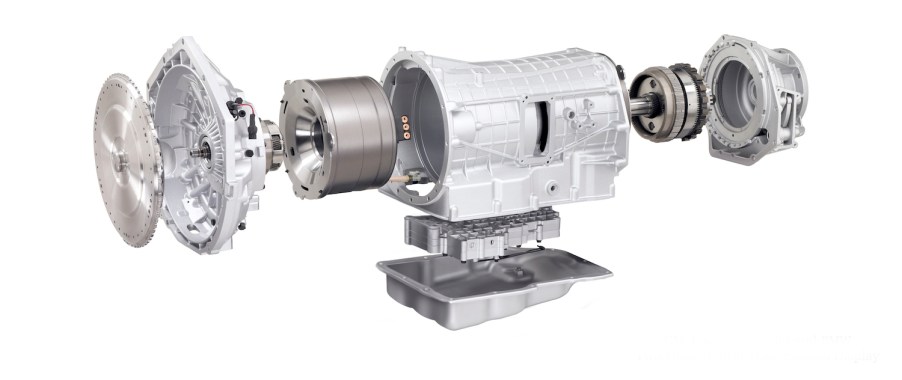
Could Hybrid Transmissions Save Traditional Internal Combustion Engines?
As automakers improve hybrid technology, they can choose between many implementations of improved powertrains. While future combustion bans aim to help the environment, hybrid “eCVT” transmissions represent one alternative solution that could preserve traditional internal combustion engines.
The hybrid eCVT transmission paired with traditional V8 engines

Way back in 2004, General Motors and and Daimler-Chrysler joined forces to develop an all-new full-size hybrid drivetrain. BMW joined the project as well. Then Daimler-Benz and Chrysler Corporation split, so the project became a collaboration between four automakers–according to Green Car Reports.
The project’s engineers developed a unique transmission with four mechanical gears and two 87-horsepower electric motor/generators. The unit was engineered to pair with a large V8 engine, assisting with braking and acceleration, and keeping the engine to a narrow RPM range to improve fuel economy. The hybrid technology was named the electric continuously variable transmission (eCVT).
All four automakers involved in the Two Mode project released the technology in at least one truck or SUV. General Motors put the eCVT behind a 6.0-liter V8 in the second generation of its hybrid Chevrolet Silverado 1500/GMC Sierra 1500. Chrysler paired the eCVT and a 5.7-liter HEMI V8 for a hybrid option in its Dodge Durango and Chrysler Aspen SUVs.
Combustion does not need to be banned, just minimized

In an effort to slow global warming, many policymakers are suggesting 2035 combustion bans. The intent is to ban the production and sale of new internal combustion engines, thus reducing fossil fuel use and emissions. But this ban will make buying a vehicle difficult for drivers in need of a longer-range option or a more affordable option. It also would toss decades of internal combustion research and development, forcing automakers to start from scratch.
But to reduce fossil fuel emissions, we don’t need to prevent combustion engines from being built. We simply need to prevent them from turning on. For example, requiring that every single new car have at least 20 miles of electric range–either as an EV or a plug-in hybrid–would prevent 90% of all current combustion-powered trips.
Automatic eCVT transmissions with integrated hybrid electric motors/generators and large-capacity Lithium-ion battery packs are an excellent way to add electric range to existing internal combustion powertrains.
The new Toyota Tundra i-FORCE MAX features an electric motor incorporated into its ten-speed automatic transmission. Though this motor/generator unit is only 48 horsepower, it can accelerate the truck form 0 mph to 18 mph with no help from the gasoline-burning V6.
Future internal combustion sales

The honest truth is that many consumers have range anxiety and still prefer a vehicle with an internal combustion motor. If new combustion vehicles are banned completely, these consumers can simply buy used internal combustion pickups and SUVs. This means a lot more miles driven under internal combustion power.
If automakers paired every large internal combustion V8 or V6 with a hybrid transmission, and a plug-in hybrid sized battery pack, it would dramatically reduce the number of miles driven under internal combustion power. When drivers needed more range or enough power for towing, they could fire up their vehicle’s traditional motor. If this shift were able to reduce emissions enough to slow global warming, it might actually preserve the availability of internal combustion engines for years.
Next, read more about Dodge’s first V8 hybrid.



